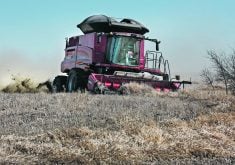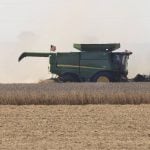Boron shortages can limit yields
Boron is one of 16 nutrients essential to crop growth. Even though it is required in only small amounts per acre, boron deficiencies are widespread in North America. Crops such as alfalfa and cotton are known to be quite responsive to boron, but other crops – fruits, vegetables and field crops – respond when soil boron supplies are short.
Boron is needed throughout a crop’s life cycle, but many soils, for various reasons, are not able to supply the mineral for the whole growing season.
Read Also

VIDEO: Ag in Motion documentary launches second season
The second season of the the Western Producer’s documentary series about Ag in Motion launched Oct. 8.
Here are some of the factors which influence boron availability.
- Organic matter – Organic matter is the primary source of reserve boron in the soil. Soils low in organic matter usually need more frequent boron fertilization.
- Soil texture – Well-drained, sandy soils are most likely to be boron deficient because of leaching. Boron can move in soil water. Total soil boron is usually highest in clay soils with high organic matter. However, plant-available boron may be quite low depending on other soil conditions.
- Cultivation – Boron is more uniformly available to plant roots when mixed through the soil by cultivation. Cultivation also speeds the rate of organic matter decomposition, releasing boron. With reduced tillage, organic matter accumulates near the soil surface. When this happens, boron availability will be more dependent on surface moisture and rainfall patterns.
- Drought – As soils dry, boron movement in the soil slows down, as does organic matter decomposition. This reduces boron availability.
- Soil pH and liming – Crop uptake of boron can drop quickly as soil pH goes above 6.5. Since many legumes require near-neutral soil pH, attention to boron availability is critical. Liming acid soils sometimes causes temporary boron deficiency and can increase the boron application rate needed for optimum plant growth.
- Soil fertility – Balance among the various soil nutrients, as well as actual boron level, influences plant efficiency of boron. There are particularly strong boron interrelationships with nitrogen, potassium and calcium.
Remember, crops need boron. Even though per-acre amounts required are small compared to nutrients like nitrogen and potassium, crops cannot produce economic yields without adequate boron.
Use soil tests, plant analysis, field history and crop to be grown to determine boron fertilizer requirements. Then be sure to apply the needed amounts.
– Potash & Phosphate Institute














